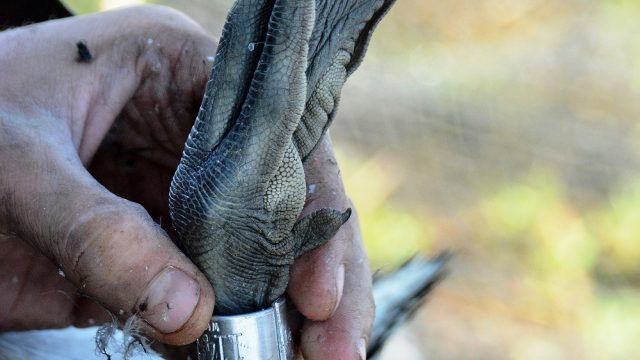Doug Leier: Banding Helps Biologists Answer Questions

I’ve learned through watching, listening and observing my kids how routine questions can often perplex adults. It’s easy to just brush it off with a quick response of “I don’t know” or some other redirection response.
Often I’ll patiently try to explain why food, habitat and weather conditions cause different bird species to migrate at different times. I’ll give my kids credit, they love to go to the library and read up on how others have had similar questions, and how they went about determining their answer.
It’s a foundational principle of science – asking the question, seeking answers and weighing differing opinions.
In the same way years ago, Dr. Paul Bartsch, working for the Smithsonian Institute in Washington, D.C., wondered about the black-crowned night heron and its migration patterns. Like any good scientist, Dr. Bartsch wasn’t satisfied with just wondering. He set out to find a way to answers his questions.
Eventually, he developed a method to discover some unknowns about the night herons, which nest in North Dakota and many other states, and winter in the southeast, and Florida and California. His heron findings weren’t all that significant in the great scheme of things, but his method revolutionized the manner by which humans searched for information on wild birds and animals.
Dr. Bartsch developed small metal bands which were stamped with serially coded numbers and the return address of the Smithsonian. He put the bands on 23 night herons in the Washington area and probably had no idea his simple plan would remain a staple for wildlife data gathering into the 21st century.
Since Bartsch’s heron project, scientists in North America have banded more than 63 million birds of nearly every species.
Banding data is also useful in measuring hunting pressure and reproductive success, in addition to tracking migration patterns. For example, an inordinate number of band returns from a single lake or area can indicate high use by birds and hunters alike.
Biologists can determine not only where waterfowl migrate, but also at what time of year. Location of sightings is used to indicate which habitats are needed by certain species during migration periods. Even more involved reports can aide in determining the species, sex and even age of birds.
Through this, observers have determined that some hummingbirds, once thought to live just a few years, may live well beyond 10 years.
Bird bands are varied and not all like the simple aluminum jewelry commonly found on ducks. Some bands are color coded. Some markers even carry radio transmitters that allow tracking by satellite, so researchers can track and study birds without disturbing their behavior.
While many hunters are eager to report band numbers and find out the particulars on the bird they retrieved, some people may wonder what and how to report their find. Any banded bird, not just waterfowl can be reported online at www.pwrc.usgs.gov/bbl/default.htm. Even bands that are found discarded or on dead birds can be reported.
A simple report and you’ll be one of thousands taking part in the continued effort to discover information so biologists and wildlife managers can make better decisions on bird management and hunting seasons.




